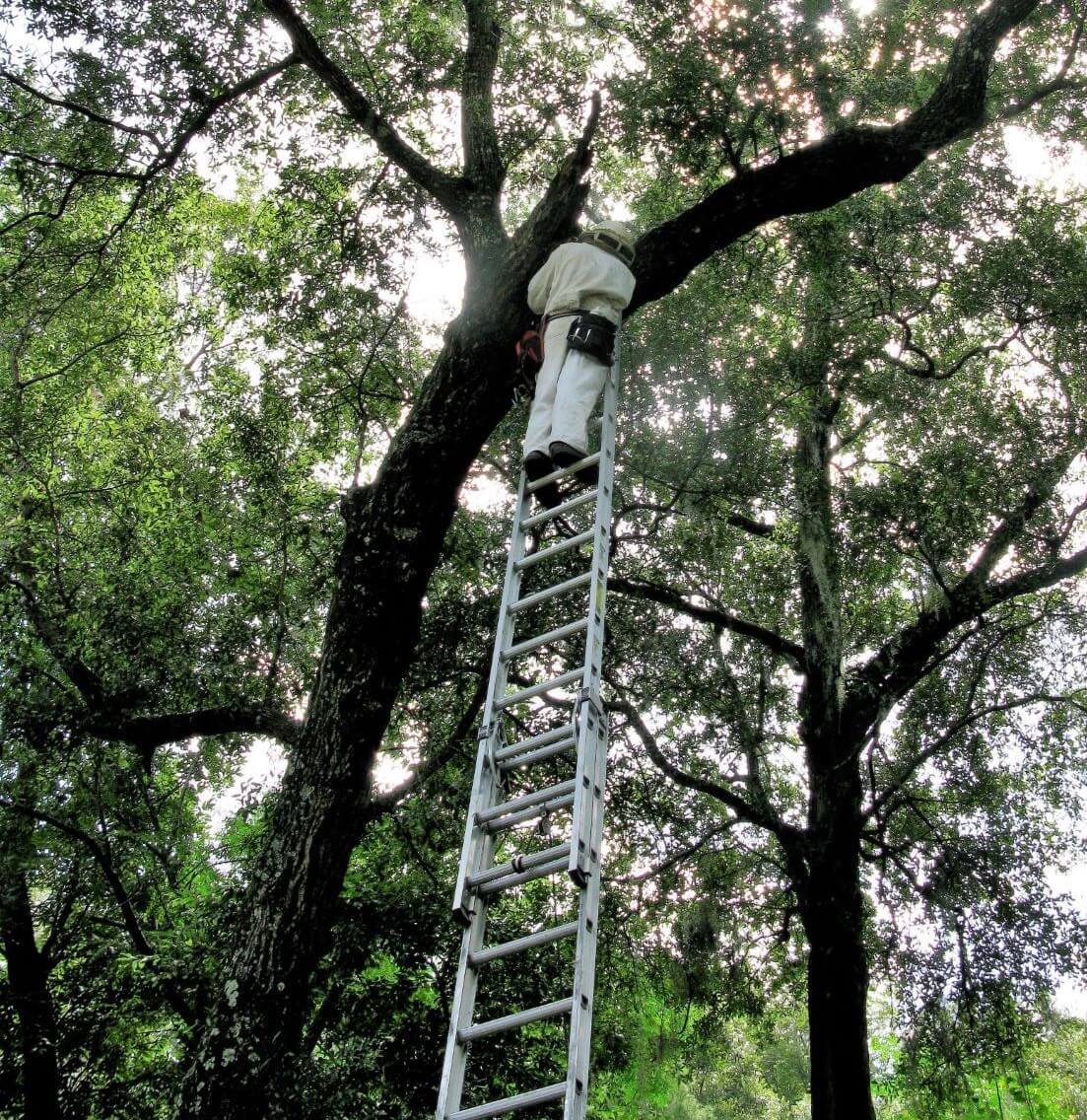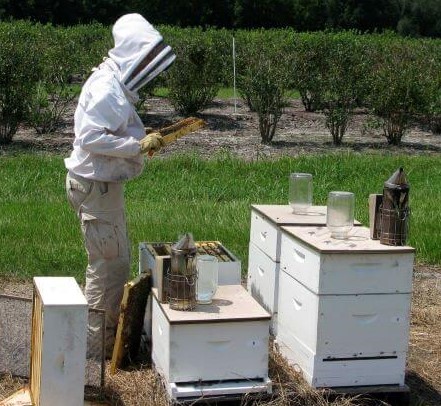A honey bee colony has two main goals for the year: 1) survive (i.e. build up the number of bees working to find and store enough honey and pollen to live through the next winter) and 2) reproduce (i.e. produce another colony). Spring is the time of the year when the honey flow starts and the colony increases in size, preparing to divide/reproduce. When a colony divides, 40-60% of the adult bees and the current queen leave the colony to find a new home. The new queen inherits the original hive. Typical spring hive maintenance includes swarm control and prevention.

Why do we try to prevent swarming?
Swarming is a natural behavior of honey bees, so why do we try to stop it from happening in our colonies? Mostly, it is about the people. A feral colony can be a danger to the general public when it takes up residence in a cavity near places that people frequent. Feral colonies become problematic when they pose a stinging threat to nearby humans and animals. Swarms are also problematic for the beekeeper, because he/she loses around half of the honey bees from the swarming colony. Fewer bees means reduced colony productivity. Swarms also cause the beekeeper to lose the potential to split one colony into two, thus decreasing his/her potential for increasing the amount of hives he/she owns.
What stimulates the colony to build up and swarm?
Swarm stimuli
- Resource availability
- Weather
- Production of drones
- Congestion in the nest
- Lack of open cells in which the queen can lay
- A dilution in queen pheromone
- Queen age
- Production of new queens (queen cells)
During inspections look for drone cells and adult drones, bee density, and amount of brood. Try to keep ahead of the bees. When you notice that a box has approximately 7 frames drawn and covered with bees, it’s time to begin preparing for the possibility of a swarm. Building new queen cells is the last step before the colony divides by swarming.
Lessening the colony’s urge to swarm
At this point, you can either add space or subtract bees. You can give the bees more space by adding an additional super on top of the hive or you can remove bees by splitting one colony into two colonies. Below are options for combating many of the swarm stimuli mentioned above.
Resource availability: The beekeeper can remove frames of honey and/or pollen and give them to another colony.
Congestion in the nest and lack of open cells for the queen: The beekeepers can add supers to give the bees more space or the beekeeper can remove frames of bees and brood. They can then use these frames to strengthen other colonies or to make splits.

Queen age: The beekeeper should always know the age of the present queen, and her typical brood pattern. When the beekeeper notices that the queen is aging or laying a spotty brood pattern, he/she should replace her. The practice of fall queen replacement provides a young queen for the spring. New queens are not usually available until mid-April in Florida.
Production of new queens (queen cells): If you have reduced the number of bees in a colony, the colony is not as likely to produce queen cells. If they continue to produce cells, the cells can be removed and used to requeen a new/different colony.
- If the queen cells are not capped, you can move the parent queen to a new box via a split and leave the queen cell to develop and produce a new queen in the current hive.
- If the queen cells are capped, check to see if the parent queen is still present. If she is absent, the colony may have already swarmed. Check nearby trees and shrubs for the swarm.
 3
3

